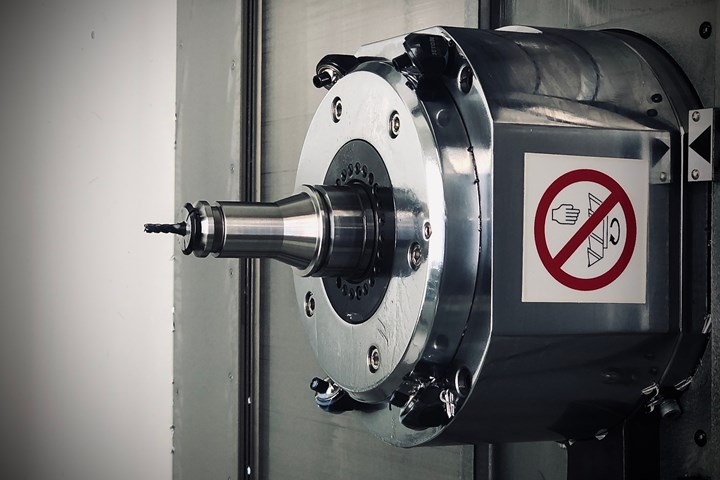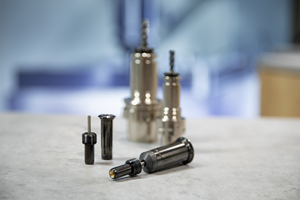How to Troubleshoot Issues With Tool Life
Diagnosing when a tool is failing is important because it sets an expectation and a benchmark for improvements. Finding out why gives us a clue for how to fix it.
Share







.png;maxWidth=45)
DMG MORI - Cincinnati
Featured Content
View More
Autodesk, Inc.
Featured Content
View MoreReader Question:
Our shop has taken on some new work with small parts in hard metals. To give you an idea on size, our largest roughing tool is a 2.5-mm end mill. Tool life has been the number one issue in this new venture. Can you advise on how to approach this problem?
Miller’s Answer:
Whenever you are struggling with tool life, there are two important things to diagnose: 1) When is the tool failing? and 2) Why is the tool failing? Finding out when the tool is failing is important because it sets an expectation and a benchmark for improvements. Finding out why gives us a clue for how to fix it.
Another important thing to assess is why you’re unsatisfied with the tool life. Are you trying to improve surface finish, optimize roughing or maintain dimensional control? Understanding your expectations of a tool in its given task will enable you to properly assess needed improvements. For example, slight wear to a tool’s edge and coating may be perfectly acceptable during a roughing-focused operation, while minimal chipping may be the difference between ship and scrap for a critical surface.
For this application, it is also worth determining what is reasonable. In hard metals, I prefer to see a bare minimum of 30 minutes of tool life for heavy roughing. In your application, I’d like to see closer to one hour of in-cut time. If you find tools running much longer than this, then you may want to shift your expectations, but this is just my experience.
If you assess that a tool isn’t meeting expectations, then you need to diagnose why it is failing. Now is the time to do a study as you run your parts. It’s impossible to understand tool wear after the tool is cooked. Watch the tool progressively wear to see how it starts. If you can stop or reduce the initial wear, the tool will last longer. To do this, you’ll need to stop the cutting at shorter intervals and then track and record the wear at each interval. My suggestion is to set this interval every 10 minutes — perhaps every five minutes if needed. You can keep the tool in the holder, but try to inspect the tool under magnification of some type. The wear should be obvious; you’re not trying to inspect the carbide grain structure or the coating layers, so you don’t need a powerful microscope. A jeweler’s loupe or inexpensive USB microscope will do just fine.
As you inspect the tool at each interval, take note of some key areas of the tool: the corners of the flutes, sharp cutting edges, rake faces and flanks. Do this for all flutes all the way up the tool to the max depth of cut. Record anything you see like chipping, notching, wear marks on the coating and so on.
Once you’ve recorded the findings, put the tool back in the machine and keep running until it is unusable. Ideally, you should stop before it breaks so you don’t lose the evidence in the chip hopper. At this point, record the total tool life in minutes. This will be your bogey for future improvements.
With a better understanding of the when and why, it’s now time to apply some improvements. If you do a quick search, many cutting tool companies provide resources on how to diagnose and correct tool wear. In general, the industry agrees that there are eight common wear mechanisms. For your scenario, I would concentrate on the four which are most common to milling, which are flank wear, built-up edge, chipping and notching.
Flank wear is quite normal, but you can make changes to slow its progression. Built-up edges cause issues because you now have soft metal leading the cut versus the sharp carbide edge. Chipping is the beginning stages of fracture in the tool. Notching is accelerated chipping, usually found where the depth of cut is.
While there can be many possible corrective actions, they all have two themes in common across all the wear mechanisms: managing heat and managing force. In the case of heat, this is related to the surface speed. The more rotational energy (rpm) you apply to the tool to get it through the material, the more frictional energy is created in heat. Ideally, most of the heat goes into the chip, but the tool must endure some. This may also mean properly removing heat with a better coolant type or delivery. In the case of cutting forces, too much will break a tool, and if it doesn’t break the tool, it will accelerate chipping over time. Reducing chip load or depth of cut will help. Also remember that carbide can be very brittle; therefore, excessive vibrations must be managed as well. While cutting forces may be reasonable, suppressing the spikes in cutting forces is equally important. Slower entry into the material or into corners, as well as a more robust toolholder, are good ways to lower these spikes. If you specifically see wear on the corners of a tool, you may also consider a corner radius or small chamfer to create some strength on the tool’s weakest point if the part geometry allows.
With a solid understanding of when and why tools fail, you can apply the corrective actions and repeat the trials. Keep iterating until you’re satisfied with the tool life. If you still find yourself stuck trying to improve the same cutting tool, use the evidence to guide the selection of your next cutting tool, which may mean using a new geometry or coating.
Related Content
How to Mitigate Chatter to Boost Machining Rates
There are usually better solutions to chatter than just reducing the feed rate. Through vibration analysis, the chatter problem can be solved, enabling much higher metal removal rates, better quality and longer tool life.
Read MorePowRgrip Responds to Three Tooling Trends
Rego-Fix’s PowRgrip tooling system has expanded over the past 20 years to incorporate a wider range of tool sizes, as well as automation.
Read MoreRego-Fix Toolholding System Reduces Coolant Consumption
MQL PG collets are designed for machines using one-channel, internal through-spindle MQL systems.
Read MoreQuick-Change Tool Heads Reduce Setup on Swiss-Type Turning Centers
This new quick-change tooling system enables shops to get more production from their Swiss turning centers through reduced tool setup time and matches the performance of a solid tool.
Read MoreRead Next
Building Out a Foundation for Student Machinists
Autodesk and Haas have teamed up to produce an introductory course for students that covers the basics of CAD, CAM and CNC while providing them with a portfolio part.
Read MoreSetting Up the Building Blocks for a Digital Factory
Woodward Inc. spent over a year developing an API to connect machines to its digital factory. Caron Engineering’s MiConnect has cut most of this process while also granting the shop greater access to machine information.
Read MoreRegistration Now Open for the Precision Machining Technology Show (PMTS) 2025
The precision machining industry’s premier event returns to Cleveland, OH, April 1-3.
Read More




































.png;maxWidth=300;quality=90)








.png;maxWidth=970;quality=90)